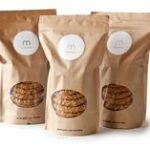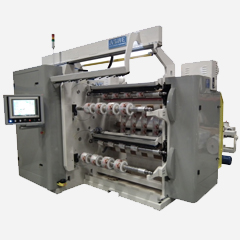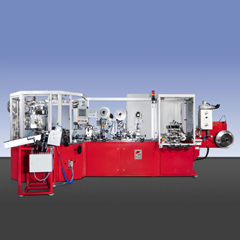The way in which consumers view and interact with packaged products is changing. With a growing focus on convenience and sustainability, traditional pack types are being replaced by innovative and flexible options designed to meet these consumer needs. The flexible packaging market is estimated to be worth $351 billion by 2018, meaning that it is rapidly gaining market share from other sectors such as traditional rigid packaging.
There have been many exciting new product developments which have helped to demonstrate to consumers the true potential of flexible packaging. Examples include the Halls “twist-off” Stickpack converted by Sonoco & Co – a flexible package which allows one sweet to be dispensed without losing others – and the Savvy Green Laundry Detergent Pouch, which displays high-end graphics and offers easy dispensation.
So, what sets these products apart from the rigid packaging we are more used to seeing on supermarket shelves? In the sixth instalment of our exclusive and informative bulletin series, SmithersPira examines the latest flexible packaging market trends, as well as the main advantages of flexible packaging over more traditional rigid packaging solutions.
1. Lightweight
The bottled water sector is a prime example of a market in which materials have gotten lighter and lighter over time, producing less waste. However, manufacturers have now reached the stage where PET bottles cannot be made much lighter.
Therefore, the next step in this process is to replace plastic bottles with lightweight, flexible pouches. This development has been gaining traction over the years, although widespread usage has not yet occurred. The primary reason for this has been issues with high-speed filling – while PET bottles can be filled at speeds of 1,500 packages per minute, the process of filling pouches falls behind at only 400 packages per minute.
However, some of the newer PET bottle-filling technologies are designed to transport the bottle through the cycle via the neck, a breakthrough which will also allow the introduction of pouches using the same technology. This is forecast to occur as early as 2014, and the use of pouches would allow water companies to reduce their packaging weight by 50%.
2. Ease of Decorating
Part of the total cost of any rigid package is the label, and these are applied as part of the filling process. Labels are supplied from a different supplier than the bottles, meaning that they often become a bottleneck in the filling process.
With flexible packaging such as pouches, the converting of the pouch generally includes full printing features along with the lamination of the films if necessary. This printing only marginally increases the cost of the pouch and has no effect on the filling process itself. Printing options for flexible packaging are endless, and can be instantaneously changed if required.
Another key decorating feature is the printing of security or brand identity graphics, which is just being developed for flexible packaging. The challenge associated with this new technology is: how can security graphics be included in the packaging design without making it obvious to the potential counterfeiter? Solutions include pigment additives which only appear under certain lighting and inks which disappear and reappear depending on environmental conditions. Such technology simply isn’t possible with rigid alternatives.
3. Barrier Properties
One of the main advantages of flexible packaging over rigid packaging is the ability of the company to “dial-in” the appropriate barrier for the product and end-use. Many products, such as juices, wines and milk, require a reasonable oxygen barrier. Bottles made from PET, glass or multi-layer paperboard laminates provide a barrier for all products whether it is required or not.
A flexible package can be supplied with barrier properties which can provide anything from moisture and aroma protection to essentially the same barriers as glass. Aluminium foil has been used for many years as the ultimate flexible barrier material, although its properties are compromised by the most recent flexible packaging developments, such as stand-up pouches. When creased in this way the foil can fracture, leading to pinholes which let in oxygen, water and light. To combat this, new flexible materials such as styrene-acrylonitrile (SAN) have been developed as foil-replacement. SAN is tough even in thin layers, and recent production methods have improved the flexible properties of this resin.
4. Packaging Variation and Dispensing
Packages made from flexible plastic films can be made into practically any shape imaginable, and the inclusion of handles, fitments and opening features is quite straightforward. Today’s pouches often have advanced dispensing functions such as screw-top caps and laser-scored tear features. Flexible packaging can also be used to enhance rigid packs; an example being shrink labels used for plastic bottles. These labels not only provide attractive decoration features, but also additional levels of barrier protection against oxygen or light.
Other key technical developments include fitments for use with flexible packaging for liquids, with traditional dispensing taps leading to connecting valves, one-way dispensers and pop-up straws. Connecting valves allow consumers to connect a pouch with dishwashing soap directly to the appliance, so the proper amount of detergent is dosed every cycle and no clean-up is required.
5. Larger Sizes
As technology has improved, the flexible packaging market size has increased and the ability to produce packaging of ever-larger sizes has become possible. Larger retail flexible packages are now becoming the norm as consumer packaged goods and retail outlets alike take advantage of larger-format packaging. For example, the classic paperboard carton and unprinted flexible liner used for dry cereals is rapidly being replaced with flexible pouches incorporating high-end graphics and easy to reclose features. These packages are typically much larger.
Kraft Food’s YesPack for salad dressings and other condiments recently won gold at the Global Packaging Association Awards. Incorporating many of the benefits of flexible packaging into a large format package for food-service liquids, the pouch makes it easy to dispense product, and makes sure every last drop is utilised. We can expect to see many new types of pouches being introduced for large format liquid packaging as consumers better understand the benefits and converters develop new technologies to their fullest.





